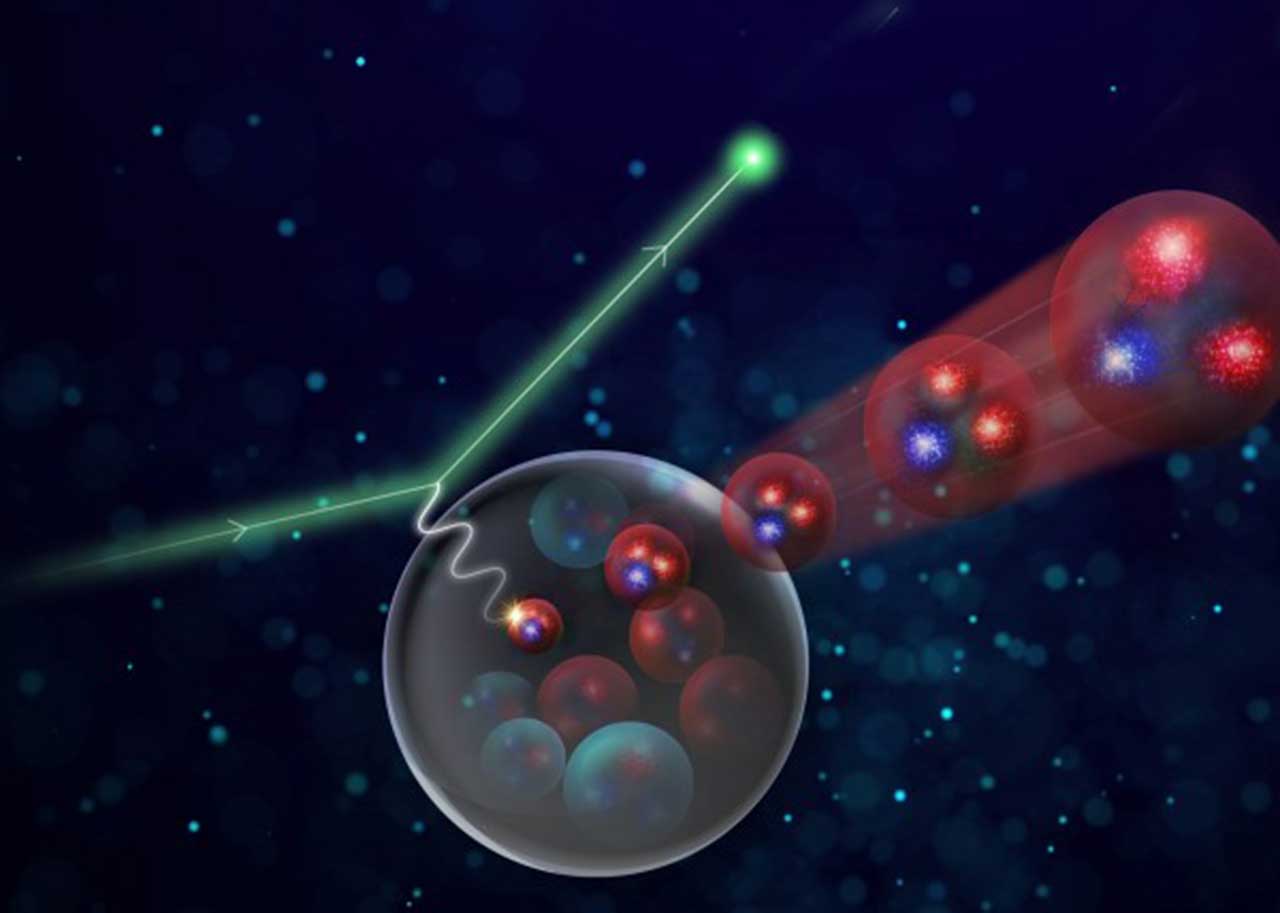
Protons are made of three quarks. These three quarks are interconnected through a vital force called the color force.
According to quantum chromodynamics, or QCD, protons can be squeezed into a smaller size. Such squeezed protons can easily slip out of the nucleus for a romp on their own.
When this happens, the proton no longer sticks to other particles and can move freely through the nucleus. This phenomenon is known as color transparency.
Observation of such squeezed protons could offer detailed insights into the particles that build our universe.
Nuclear physicists searching for these squeezed protons at the U.S. Department of Energy’s Thomas Jefferson National Accelerator Facility have come up empty-handed. They suggested that there’s more to the phenomenon than first thought.
Scientists were looking for squeezed proton as its quarks are in a small-size configuration. That’s a complicated task to do.
This was one of the first to run in the Continuous Electron Beam Accelerator Facility, a DOE Office of Science User Facility, following its 12 GeV upgrade.
In a past study, scientists detected color transparency in simpler particles made of quarks called pions. Protons consist of three quarks, whereas pions have just two. In another experiment, scientists found that protons also may exhibit color transparency at energies well within reach of the recently upgraded facility at Jefferson Lab.
Dipangkar Dutta, a professor at Mississippi State University and a spokesperson for the experiment, said, “We expected to find the protons squeezed just like the pions. But we went to higher and higher energies and are still not finding them.”
In this new experiment, scientists directed high-energy electrons from CEBAF into the nuclei of carbon atoms. They then measured the outgoing electrons and any protons that came out.
Holly Szumila-Vance, a Jefferson Lab staff scientist, said, “This was an exciting experiment to be a part of. It was the first experiment to run in Experimental Hall C after upgrading the hall for 12 GeV running. These were the highest-momentum protons measured at Jefferson Lab, and the highest-momentum protons ever produced by electron scattering.”
Dutta explained, “At the energies, we are probing, the proton is usually decimated, and you’re looking at the debris of the proton. But in our case, we want the proton to stay a proton, and the only way that that can happen is if the quarks kind of squeeze together, hold each other much more tightly so that they can escape together from the nucleus.”
Szumila-Vance said, “While the nuclear physicists observed several thousand protons in the experiment, we did not find the tell-tale signs of color transparency in the new data.”
“I think this tells us that the proton is more complicated than we expected. This is a fundamental prediction of the theory. We know that it has to exist at some high energy but don’t yet know where that will happen.”
Scientists are now looking forward to understanding the phenomenon in simpler particles where it has already been observed.
Journal Reference:
- D. Bhetuwal et al., Ruling out Color Transparency in Quasielastic C12(e,e′p) up to Q2 of 14.2 (GeV/c)2, Physical Review Letters (2021). DOI: 10.1103/PhysRevLett.126.082301
Continue reading Proton is more complicated than expected, think scientists on Tech Explorist.
0 comments:
Post a Comment